It’s no surprise that we at Cool Green Science are serious nature nerds. And now more than ever, we need our daily fix of green to cope with the uncertainties of life. But with most of the world home-bound, we’ve all had to get a little bit… creative.
So once you’ve already binge-watched all the best nature docos and tuned in to very animal cam ever, check out these short anecdotes from our writers, scientists, and other contributors on how they get their daily dose of nature during quarantine.
Matthew L. Miller
Nobody notices sculpins. Except me.

Matt Miller is director of science communications for The Nature Conservancy and author of Fishing Through the Apocalypse. His quest to catch unusual fish has taken him from wilderness streams to sewer ditches.
Sculpins are homebodies. These small fish rarely move far from under a large rock, where they blend in with their surroundings. They’re common in Western US rivers, but nobody notices. Except me. I haven’t caught a shorthead sculpin and they live within walking distance. I super-glued broken fishing rod pieces together for a mini-sculpin rod. Then I waded and searched the rocks. And searched. The fish were at my toes, so I dropped the bait straight down, using a hook about the size of this “J”. It is difficult not to feel foolish doing this. I still have not caught a shorthead sculpin. I also still have not stopped trying.
Jon Hall
Perhaps I will dare open the warbler page next.
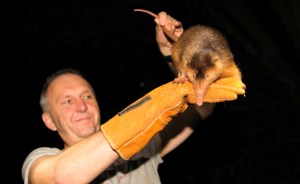
Jon Hall works for the United Nations Human Development Index and is on a quest to see the world’s mammals. He has seen 1,879 species and promotes mammal watching as an alternative to birding. Well, until now.
I spent the first lockdown weeks vicariously mammal watching: catching up on a backlog of “what species is this?” emails. Next, my OCD side took over and I turned to obsessing over the finer points of Latin grammar on my mammal life list. Is that bat Myotis bartelsi or bartelsii? By week 6 the rot had well and truly set in. I closed my mammal books and opened a field guide to help me in my backyard birding. Those woodpeckers are sapsuckers! Who knew?! Perhaps I will dare open the warbler page next.
Cara Cannon Byington
Wildlife watching from a cardboard box.
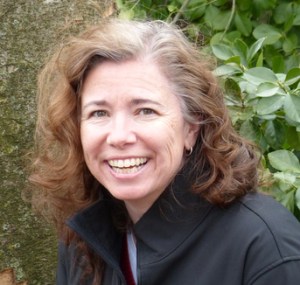
Cara Cannon Byington is the associate director of science communications for The Nature Conservancy and a staff writer at Cool Green Science. She misses hiking and, with two sons and a husband sharing quarantine, she also misses working at home by herself.
I made a wildlife watching blind for my backyard out of a couple of cardboard moving boxes, an old beach towel, and a whole lot of packing tape. I miss my nearby park (my go-to for watching the natural world go by) and I was curious about what other creatures might share my suburban patch. Especially the shy ones that stay away when we’re on the back porch.
The blind has been a revelation, especially at night…I’ve lived here for 7 years and had no idea we had opossums! I write a list of dates and observations on the inside of the box with a black sharpie. My version of a quarantine diary.
Justine E. Hausheer
When suburban spotlighting gets awkward.
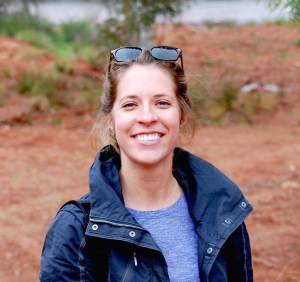
Justine E. Hausheer is a science communications specialist at The Nature Conservancy based in Brisbane, Australia. Her suitcases and passport are feeling very neglected.
I moved in March, so I spent my first week of lockdown unpacking boxes and starting a new yard list. Two weeks later, a neighbor pulled me aside to ask: “Is everything okay? We saw strange lights in the backyard at night.” I froze, mortified, wondering how to explain. “Oh no! I mean yes, everything is fine. We were spotlighting. I thought I heard an owl.”
Awkward silence, as I panic internally. Then my neighbor said: “Fun! Keep an eye out for the frogmouths. The green tree frogs like our front garden, and have you seen the peacock?”
Thankfully, they’re nature nerds, too.
Solomon David
Without fieldwork, how was I going to get my gar fix?
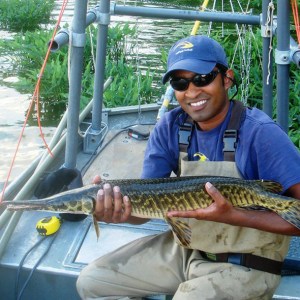
Solomon David is an aquatic ecologist and assistant professor at Nicholls State University in Louisiana. His research focuses on conservation of freshwater fish biodiversity, particularly gars and bowfins.
Wherever you go, there you gar? We had to release our spotted gars housed at the university when quarantine orders hit. With GarLab fieldwork ground to a halt, how was I going to get my gar fix? Luckily, while on a family “quarantine walk”, I spotted a gar in the neighborhood pond across the street! I’ve been visiting the pond almost daily for “fieldwork” during quarantine, and have been lucky to observe the gars and other fishes go about their daily scaly business. I even managed to see the Spotted Gars spawning; something I’ve only observed three times in 20 years of studying these ancient fish!
Chandra Earl
Could I train a computer to find moths?

Chandra Earl is a Ph.D. candidate at the Florida Museum of Natural History who uses big data and computers to unravel Earth’s biodiversity. Her latest project incorporates machine learning with natural history.
Between quarantine and dissertation writing, my isolation level was at an all-time high, so I was ecstatic when my advisor sent me a moth field guide, urging me to go outside. But then I wondered: Instead of finding moths on my own, could I train a computer to do it for me? I analyzed fieldwork footage of moths on a sheet with YOLO, a machine learning model that finds objects in images. Hawkmoths seemed easy enough – they look (and sound) like little airplanes! End result? It worked almost magically. Maybe tomorrow, I’ll even get outside.
Patrick Doran
One million steps. In three months.
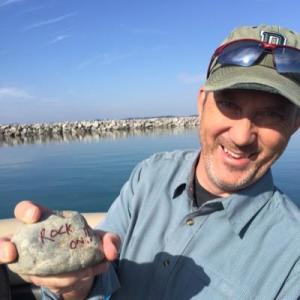
Patrick Doran is the Associate State Director for The Nature Conservancy working in Michigan. He is a birder, trying to be a photographer, hoping to start running again, and missing playing and watching soccer.
One million steps. In three months. I’m not quite there yet, but almost. On average, evidence suggests that covid-19 has muted physical activity around the world, but not in my house. I have been taking refuge in nearby nature, almost exclusively in a county park and around a lake adjacent to our neighborhood. But the steps are simply a means to getting lost in nature and a way to reinvigorate. And “getting lost” mostly means bird watching, taking photos and talking with my favorite walking partner, Heather. I’ve even started a new Twitter hashtag – #TodayInTheWoods. And as of today, my bird list stands at 89 species within walking distance from the house 12.
Molly Wallace
Taking a close look at backyard biodiversity.

Molly Wallace is the managing director of global science at The Nature Conservancy. She lives in Seattle with her young son.
Just before shelter in place took effect, my son and I were at a used bookstore in California where we picked out a tattered book called “One Small Square: Backyard.” It takes you through seasons, through life cycles – for my son, there was nothing more intriguing than all of the things that could be burrowing in our backyard. We never made the actual square the book instructs you to do, and I don’t tell him when a new place of scattered dirt was likely made by a feral neighborhood cat. Each morning, rain or shine, we venture out to see if there is a new hole, a new mound, or something else small and spectacular to be discovered.
Tim Boucher
This listing thing may be out of control…
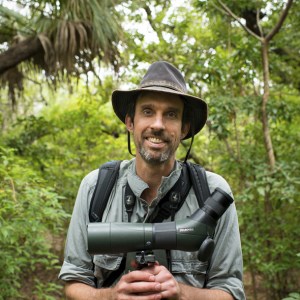
Tim Boucher is a conservation geographer at The Nature Conservancy. He’s a fanatic birder turned gardener who tries to take photos of anything interesting.
The lockdown is probably easier for me than most. We set up our garden specifically for birds, planting native plants and building our own stream and pond that I can see from my home-office window. So naturally I am spending a quite a bit of time watching the goings-on of our little patch, eBirding, and photographing interesting things. But my ultimate goal is trying to see neotropical migrants in the spring, and adding more species to my yard list (which stands at 116). I also have a mammal list, and a reptile list… so yea, this listing thing may be out of control.
Bryan Piazza
Zoom calls are better with kites.
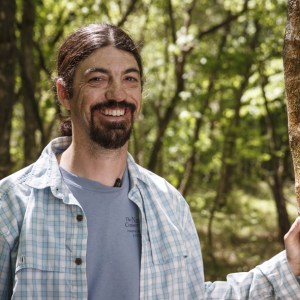
Bryan Piazza is the director of freshwater and marine science for The Nature Conservancy in Louisiana and author of “The Atchafalaya River Basin – History and Ecology of an American Wetland.” He lives in Baton Rouge, Louisiana.
I love Mississippi kites. I wait anxiously for these small raptors to arrive from South America every spring to nest in our neighborhood trees, soar over my house and divebomb their prey.
Over the years, I’ve noticed that it’s time to start looking skyward 10-14 days after the pecan trees leaf out. Usually, I see my first kite from my truck – on the way to drop off kids at school or go to the office. Or maybe after work as I sit on my deck. But this year, I saw my first kite while on a Zoom call, working from home on my back deck. And now, I get to enjoy them all day while working – a small treat in these strange times.
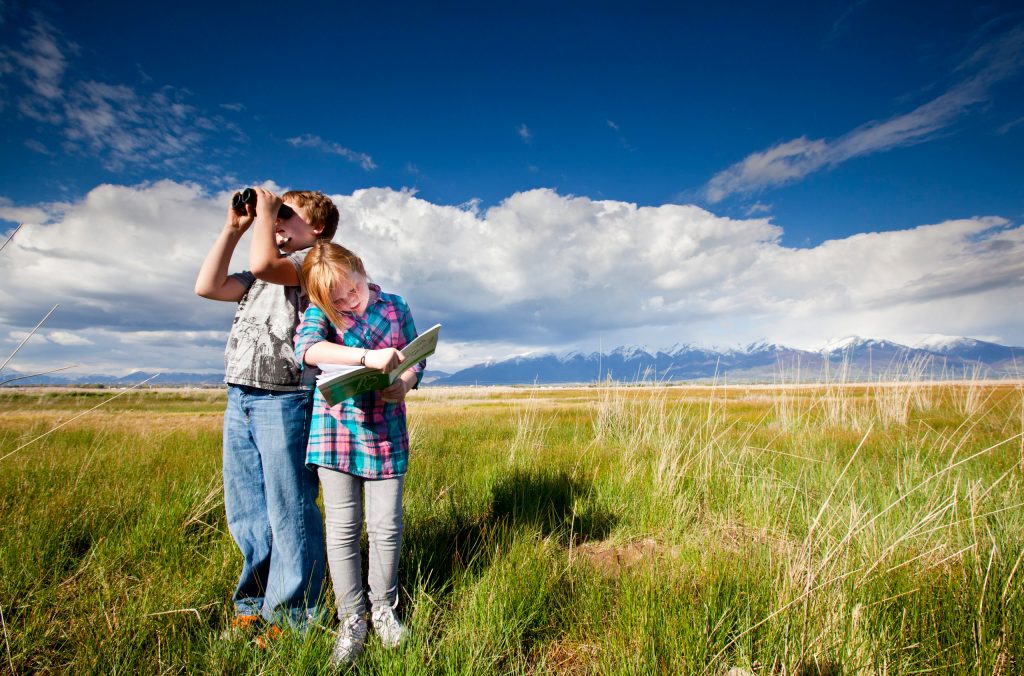



As a tax preparer I have always missed the explosion of nature in the spring being too busy working 60 hours or more a week in a windowless office. I should have retired years ago since I am in my early 70’s and money has become less important. Now this sheltering in place has become a special gift to me. Walking through my small urban yard and noticing the early ephemerals flowering and tree buds swelling with warmer weather. But the migrating birds visiting my yard on their way north are such great entertainment. Some do a dance, scratching and turning up leaf litter. Some splashing in the bird bath. I think I counted at least 10 different species at one time. I felt honored that they stopped for a rest in my yard.
Great article, especially bringing together Patrick Doran and Solomon David! 🙂 TNC New Mexico is hosting a virtual event next week with Florence Williams, author of The Nature Fix: https://www.nature.org/en-us/get-involved/how-to-help/volunteer-and-attend-events/find-local-events-and-opportunities/nm-thriving-with-nature/